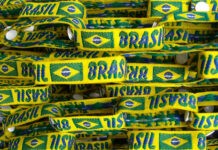Indonesia is somewhat typical of an emerging market where a heady combination of rapid economic growth, accelerated urbanisation and the westernisation of consumption culture has proved a major boost to fast moving consumer goods. Interestingly, however, whilst the country ranks 70th (out of the top 80 world economies) in terms of per capita income, tissue consumption continues to lag behind, ranking 77th, with reported annual per capita spend of US$0.30. Although per capita spend remains low, the rate of increase has been phenomenal, tripling over the last decade, but the key to understanding this somewhat confusing set of statistics is to see tissue sales (and hygiene for that matter) as still very much the preserve of the middle-classes in Indonesia.
Tissue sales reached US$68 million in Indonesia in 2012, which was slightly ahead of the much more populous Indian market (at US$64 million); this is still evidence of narrow acceptance and also issues of affordability and even applicability, which tissue products suffer from across the breadth of both populations. Taking a more positive view, the Indonesian market for tissue is certainly heading in the right direction and is fast becoming a symbol of modernity through new modes of consumption, with the middle-classes today painting a picture of how the mass of Indonesian consumers may be behaving in 10 or 20 years hence.
Modern retail channels dominate distribution
An illustration of the ‘narrowness’ of the tissue consumer base is reflected in the importance of ‘modern’ retail channels, with supermarket and hypermarket retailers accounting for 60% of tissue value sales. The position of modern retail outlets, and particularly the more affluent urbanites these products appeal to, is evident given that modern retail was responsible for less than 20% of total grocery retail sales in 2012.
Other areas of modernisation have also proved significant to the rapidly developing Indonesian tissue market. Household possession of a flush toilet has, for example, increased as plumbing and waste treatment has improved, boosting the possession rate from just over 50% in 2000 to close to 70% in 2012. Whilst the pervasion of ‘sit’ rather than ‘squat’ toilets has seen the westernisation of toilet culture by encouraging the use of dry paper over washing with water, toilet paper has also benefited from its inherent versatility and low unit prices.
Price inflation encourages budget brand offerings
While unit prices of toilet paper are relatively low, the Indonesian market has suffered from inflation thanks to persistently high pulp prices, which have adversely impacted usage further down the income ladder. The influence of inflation is perhaps best illustrated by the fact that value sales saw a 10% increase over 2011/2012 whilst volume increases were reported at half this rate, indicating a more pedestrian increase in per capita tissue consumption. Rising prices only served to reinforce the status quo in 2012 as sales were further restricted to the more affluent middle-classes and to modern retailers which increasingly used price promotions and larger pack sizes as a means to offer consumers better value for money, a tactic which again reinforced the primacy of middle- class consumers.
An example of this migration to value products as well as the dominance of modern chained retailers came from the widening availability of private label products. While in many developing countries consumers are still looking for brands and are unfamiliar with the concept of retailers’ (own) brands, this was not true of Indonesia where the popularity of retailers such as Carrefour as well as consumers’ eye for a bargain helped the value share taken by private label continue to increase to 8% in 2012, way ahead of similarly positioned (in terms of income) developing markets.
Medium-term outlook
Over the long term the Indonesian market is likely to continue to post strong value growth, with volumes likely to follow in the wake of what seems to be a period of greater stability in global raw material prices. The current period of economic and political stability appears set to continue, bringing with it further liberalisation and ultimately westernisation of Indonesian lifestyles, which should help underpin the tissue industry, along with population growth. In every sense, Indonesia has the right mix of ingredients to be a key and successful tissue market for quite some time to come.
By Ian Bell, country report Euromonitor International’s global head of tissue and hygiene research
































